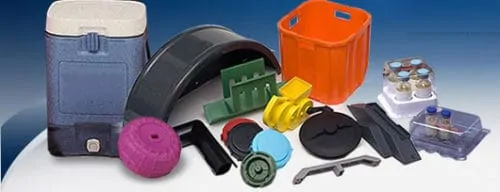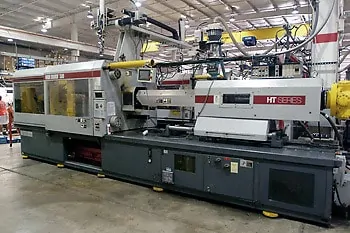A Guide to Plastic Tooling for Injection Molding
Injection molding is a key manufacturing process for most modern industries. It is a versatile process that manufacturers can customize to achieve different end products. To settle on a particular injection molding design, companies should decide on the type of mold, final product quality, and the end-use application. We’ll discuss these considerations here to help you determine the best injection molds and tooling for your production needs.
Types of Plastic Injection Molds
There are several different types of plastic injection molds, depending on their feeding system, cavities, and mold opening:
- Feeding system
- Hot runner injection mold: This type of injection mold has a heated channel that guides the molten plastic into the tool cavity. The runners are part of the mold and the temperature is kept above the plastic’s melting point to keep the material liquid.
- Cold runner injection mold: Cold runner injection molds use an unheated physical channel directing the liquid plastic into the cavity. The runner is cooled and ejected with the part after each injection cycle.
- Number of cavities
- Single cavity: Single cavity molds produce one part per injection cycle. Tooling costs are low, while unit cost is higher. These molds are best for low-volume production runs.
- Multi-cavity: With a multi-cavity mold, multiple parts are made per cycle, which raises initial tooling costs and lowers the per-unit price. Thus, multi-cavity molds are an effective way to increase production.
- Family mold: A family mold produces at least two different parts in a single injection cycle.
- Mold opening
- Two-plate mold: Two-plate molds are the most common type of mold opening, where two plates join and split at a parting line.
- Three-plate mold: Three-plate molds have two parting planes that split the mold into three sections.
Design Considerations for Injection Molding
There are several injection mold design considerations that may affect the final product quality and process repeatability, including:
- Size. Injection plastic molding has a maximum shot size, which limits the amount of molten plastic that can be injected per cycle. Shot sizes can range from 3 oz to 600 oz.
- Materials. There are many different materials you can use, and each behaves uniquely during the injection molding process and results in different final products. Materials include acetal, high-density polyethylene (HDPE), polycarbonate, acrylic, nylon, polypropylene, and more.
- Surface finishes. Injection molding can produce parts with various surface finishes, from textured to matte to glossy.
- Color matching and secondary finishing. Customers can also request that part colors match certain Pantone numbers or other samples. Other secondary finishing services include pad printing—to add company logos—and laser engraving for part traceability purposes.
- Draft. Adding drafts to the mold facilitates easier removal of the part after each injection cycle.
- Undercuts. Undercuts are part features that cannot be injection molded with a basic two-part mold because the material itself prevents ejection or blocks the mold from opening. The injection mold design must take undercuts into consideration by either avoiding them or redesigning the existing mold.
- Wall thickness. The ideal wall thickness is based on the material you select. For example, the recommended wall thickness for injection molding with ABS is 0.045 to 0.140 inches, which differs from the 0.030 to 0.120 inch recommended thickness for acetal injection molding.
- Radii. Adding radii means rounding out sharp corners, which allows the material to flow easier and makes the part easier to remove.
Plastic Tooling for Injection Molding Applications
Applications for injection molding include:
- Consumer goods
- Medical devices
- Electronics
- Packaging
- Telecommunications
- Mechanical parts
- Decorative products
- Firearm components
- Furniture
- Hardware
- Pet products
- Pressure transducers
- Toys
- Window components
Plastic Tooling for Injection Molding From Lerner Molded Plastics
With over 25 years of experience, Lerner Molded Plastics is an ISO 9000-2000 certified manufacturer of plastic injection molds and tooling. We offer injection molding, tooling, and mold-making services to customers across diverse industries. Our capabilities range from small, precision tools to large, multi-cavity tools that include aluminum tooling prototypes. We also fabricate assembly and check fixtures.
Plastic injection molding can be a daunting process with many options to choose from, but we can guide you through these considerations and help you decide on the best injection molding tooling and part design for your project. To see how we can help, contact us today. If you’re ready to get started, request a quote.




Comments are closed